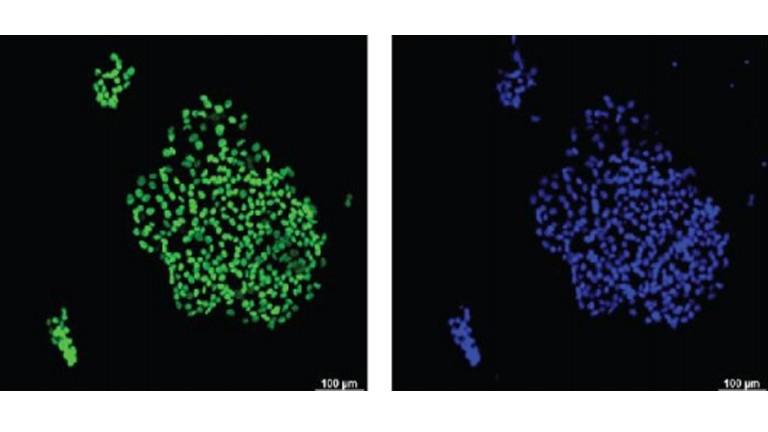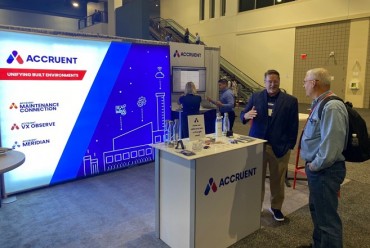
The DIY finger-prick technique opens door for extensive stem cell banking (image: A*STAR’s Institute of Molecular and Cell Biology (IMCB))
Singapore, Mar 20, 2014 (Korea Bizwire) – Scientists at A*STAR’s Institute of Molecular and Cell Biology (IMCB) have developed a method to generate human induced pluripotent stem cells (hiPSCs) from a single drop of finger-pricked blood. The method also enables donors to collect their own blood samples, which they can then send to a laboratory for further processing. The easy access to blood samples using the new technique could potentially boost the recruitment of greater numbers and diversities of donors, and could lead to the establishment of large-scale hiPSC banks.
By genetic reprogramming, matured human cells, usually blood cells, can be transformed into hiPSCs. As hiPSCs exhibit properties remarkably similar to human embryonic stem cells, they are invaluable resources for basic research, drug discovery and cell therapy. In countries like Japan, USA and UK[1], a number of hiPSC bank initiatives have sprung up to make hiPSCs available for stem cell research and medical studies.
Current sample collection for reprogramming into hiPSCs include invasive measures such as collecting cells from the bone marrow or skin, which may put off many potential donors. Although hiPSCs may also be generated from blood cells, large quantities of blood are usually required. In the paper published online on the Stem Cell Translational Medicine journal, scientists at IMCB showed for the first time that single-drop volumes of blood are sufficient for reprogramming into hiPSCs. The finger-prick technique is the world’s first to use only a drop of finger-pricked blood to yield hiPSCs with high efficiency. A patent has been filed for the innovation.
The accessibility of the new technique is further enhanced with a DIY sample collection approach. Donors may collect their own finger-pricked blood, which they can then store and send it to a laboratory for reprogramming. The blood sample remains stable for 48 hours and can be expanded for 12 days in culture, which therefore extends the finger-prick technique to a wide range of geographical regions for recruitment of donors with varied ethnicities, genotypes and diseases.
By integrating it with the hiPSC bank initiatives, the finger-prick technique paves the way for establishing diverse and fully characterised hiPSC banking for stem cell research. The potential access to a wide range of hiPSCs could also replace the use of embryonic stem cells, which are less accessible. It could also facilitate the set-up of a small hiPSC bank in Singapore to study targeted local diseases.
Dr Loh Yuin Han Jonathan, Principal Investigator at IMCB and lead scientist for the finger-prick hiPSC technique, said, “It all began when we wondered if we could reduce the volume of blood used for reprogramming. We then tested if donors could collect their own blood sample in a normal room environment and store it. Our finger-prick technique, in fact, utilised less than a drop of finger-pricked blood. The remaining blood could even be used for DNA sequencing and other blood tests.”
Dr Stuart Alexander Cook, Senior Consultant at the National Heart Centre Singapore and co-author of the paper, said “We were able to differentiate the hiPSCs reprogrammed from Jonathan’s finger-prick technique, into functional heart cells. This is a well-designed, applicable technique that can unlock unrealized potential of biobanks around the world for hiPSC studies at a scale that was previously not possible.”
Prof Hong Wanjin, Executive Director at IMCB, said “Research on hiPSCs is now highly sought-after, given its potential to be used as a model for studying human diseases and for regenerative medicine. Translational research and technology innovations are constantly encouraged at IMCB and this new technique is very timely. We hope to eventually help the scientific community gain greater accessibility to hiPSCs for stem cell research through this innovation.”
[1] New York Stem Cell Foundation, California Institute for Regenerative Medicine, Wellcome Trust Sanger Institute and Kyoto University Center for iPS Cell Research & Application are some institutes which are establishing hiPSC banks.
The research findings described in this media release can be found in the Stem Cell Translational Medicine Journal, under the title, “Human Finger-prick iPSCs Facilitate the Development of Stem Cell Banking” by Hong-Kee Tan,1, Cheng-Xu Delon Toh,1,16, Dongrui Ma,2,16, Binxia Yang,1, Tong Ming Liu,3, Jun Lu,2, Chee-Wai Wong,1, Tze-Kai Tan,1, Hu Li,4, Christopher Syn,5,15, Eng-Lee Tan,6,7, Bing Lim,3,8, Yoon-Pin Lim,9,10,11, Stuart A. Cook,2,12,13,14, Yuin-Han Loh,1,15.
1. Epigenetics and Cell Fates Laboratory, A*STAR Institute of Molecular and Cell Biology, 61 Biopolis Drive Proteos, Singapore 138673, Singapore 2. Research and Development Unit (RDU), National Heart Centre Singapore, Singapore 3. Stem Cell and Developmental Biology, Genome Institute of Singapore, A*STAR, Singapore 4. Center for Individualized Medicine, Department of Molecular Pharmacology & Experimental Therapeutics, Mayo Clinic, Rochester, USA 5. Health Sciences Authority, Singapore 6. Centre for Biomedical and Life Sciences, Singapore Polytechnic, Singapore 7. Department of Paediatrics, University Children’s Medical Institute, National University Hospital, Singapore 8. Beth Israel Deaconess Medical Center, Harvard Medical School, Boston, Massachusetts, USA 9. Department of Biochemistry, Yong Loo Lin School of Medicine, National University of Singapore, Singapore 10. NUS Graduate School for Integrative Sciences and Engineering, National University of Singapore, Singapore 11. Bioinformatics Institute, A*STAR, Singapore 12. Duke-NUS Graduate Medical School, Singapore 13. Royal Brompton Hospital, London, UK 14. National Heart & Lung Institute, Imperial College, London, UK 15. Department of Biological Sciences, National University of Singapore, Singapore
All the authors contributed equally to the work.
Correspondence should be addressed to Yuin-Han Loh, Epigenetics and Cell Fates Laboratory, A*STAR Institute of Molecular and Cell Biology, 61 Biopolis Drive Proteos, Singapore 138673, Singapore. E-mail: yhloh@imcb.a-star.edu.sg
Full text of the Stem Cell Translational Medicine paper can be accessed online from: http://bit.ly/1hEI98J.
About Institute of Molecular and Cell Biology (IMCB)
The Institute of Molecular and Cell Biology (IMCB) was established in 1987 at the National University of Singapore (NUS) before becoming an autonomous research institute (RI) of A*STAR and moving to Biopolis in 2004. IMCB strives to maintain the scientific excellence of PI-driven research and at the same time aims to promote collaborative team-based projects of medical and industrial relevance.
Funded primarily by the Biomedical Research Council (BMRC) of A*STAR, IMCB’s research activities focus on four major fields: Animal Models of Development and Disease, Cancer Genetics and Therapeutics, Cell Biology in Health and Disease, and Structural Biology and Drug Discovery. For more information about IMCB, please visitwww.imcb.a-star.edu.sg.
About A*STAR
The Agency for Science, Technology and Research (A*STAR) is Singapore’s lead public sector agency that fosters world-class scientific research and talent to drive economic growth and transform Singapore into a vibrant knowledge-based and innovation driven economy.
In line with its mission-oriented mandate, A*STAR spearheads research and development in fields that are essential to growing Singapore’s manufacturing sector and catalysing new growth industries. A*STAR supports these economic clusters by providing intellectual, human and industrial capital to its partners in industry.
A*STAR oversees 18 biomedical sciences and physical sciences and engineering research entities, located in Biopolis and Fusionopolis, as well as their vicinity. These two R&D hubs house a bustling and diverse community of local and international research scientists and engineers from A*STAR’s research entities as well as a growing number of corporate laboratories. For more information on A*STAR, please visitwww.a-star.edu.sg.
Source: About A*STAR (via ACN Newswire)






